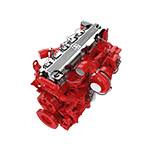Oct . 09, 2024 10:45 Back to list
drum brakes
Understanding Drum Brakes A Comprehensive Guide
Drum brakes are one of the oldest types of braking systems employed in vehicles, and they continue to play a crucial role in modern automotive design. While they have been largely overshadowed by disc brakes due to their superior performance characteristics, drum brakes still offer unique advantages that make them relevant in various applications today.
What Are Drum Brakes?
Drum brakes consist of a brake drum, brake shoes, and a wheel cylinder. The brake drum is a circular metal component that rotates with the wheel. The brake shoes are curved pieces of friction material that press against the inside surface of the brake drum when the brakes are applied. This action generates friction, which slows down the vehicle. The wheel cylinder is mounted on the backing plate and houses pistons that push the brake shoes against the drum when hydraulic pressure is introduced.
How Do Drum Brakes Work?
When the driver presses down on the brake pedal, hydraulic fluid is sent from the master cylinder to the wheel cylinder. This fluid pressure forces the pistons outward, pushing the brake shoes against the inner surface of the drum. The friction between the shoes and drum creates the stopping force required to decelerate the vehicle.
As the brakes are engaged, the drum rotates with the wheel, and the shoes expand outward to maintain contact with the drum. The construction of drum brakes allows for a larger friction surface area compared to disc brakes, which can be beneficial, especially in applications requiring sustained braking forces, such as in heavy-duty vehicles.
Advantages of Drum Brakes
1. Cost-Effective Drum brakes are generally less expensive to manufacture and install than disc brakes. Their simpler design contributes to lower production costs and maintenance expenses, making them a popular choice for budget vehicles.
2. Self-Application One notable feature of drum brakes is their self-application mechanism. When the vehicle is in motion, the design of the drum and shoes allows the system to use the rotation of the drum to apply additional force to the shoes, enhancing braking efficiency.
drum brakes

3. Effective at Low Speeds Drum brakes excel in situations where low-speed braking is essential, such as in stop-and-go traffic. Their ability to provide significant stopping power in these scenarios makes them suitable for certain urban applications.
4. Resistance to Water Drum brakes can be less affected by water compared to disc brakes, which can lead to reduced braking efficiency when wet. The enclosed nature of the drum design helps keep friction material drier.
Disadvantages of Drum Brakes
Despite their advantages, drum brakes do face some significant drawbacks that have led to their decline in popularity
1. Heat Dissipation Drum brakes are less effective at dissipating heat than disc brakes. Under intense braking conditions, this can lead to brake fade, where the braking performance diminishes due to overheating.
2. Complexity of Maintenance Servicing drum brakes can be more complex and time-consuming than disc brakes. The nested components can make it harder for technicians to quickly inspect and replace worn parts.
3. Limited Performance While drum brakes are effective for certain applications, they generally do not perform as well as disc brakes in high-speed or high-performance situations.
Conclusion
Drum brakes, while largely replaced by disc brakes in many modern vehicles, continue to be an essential component in the automotive braking system, especially for economy and utility vehicles. Their unique advantages, such as cost-effectiveness and efficient low-speed braking, ensure their relevance in specific applications. Understanding how drum brakes operate and their place in the automotive landscape helps drivers make informed decisions about the vehicles they choose and their maintenance needs. As automotive technology evolves, drum brakes may still find niches where their benefits can be maximized alongside the more widely adopted disc brake systems.
-
Scania Brake Drums: OEM Quality for Optimal Safety & Durability
NewsAug.16,2025
-
R.V.I: Advanced Remote Visual Inspection for Precision
NewsAug.15,2025
-
Discover HYUNDA: Innovative Vehicles, Equipment & Solutions
NewsAug.14,2025
-
R.V.I: Unlock Advanced Insights & Real-time Performance
NewsAug.13,2025
-
Kamaz Brake Drum: Durable & Reliable for Heavy Duty Trucks
NewsAug.12,2025
-
Heavy Duty Iveco Brake Drum - Premium Quality & Safety
NewsAug.11,2025
